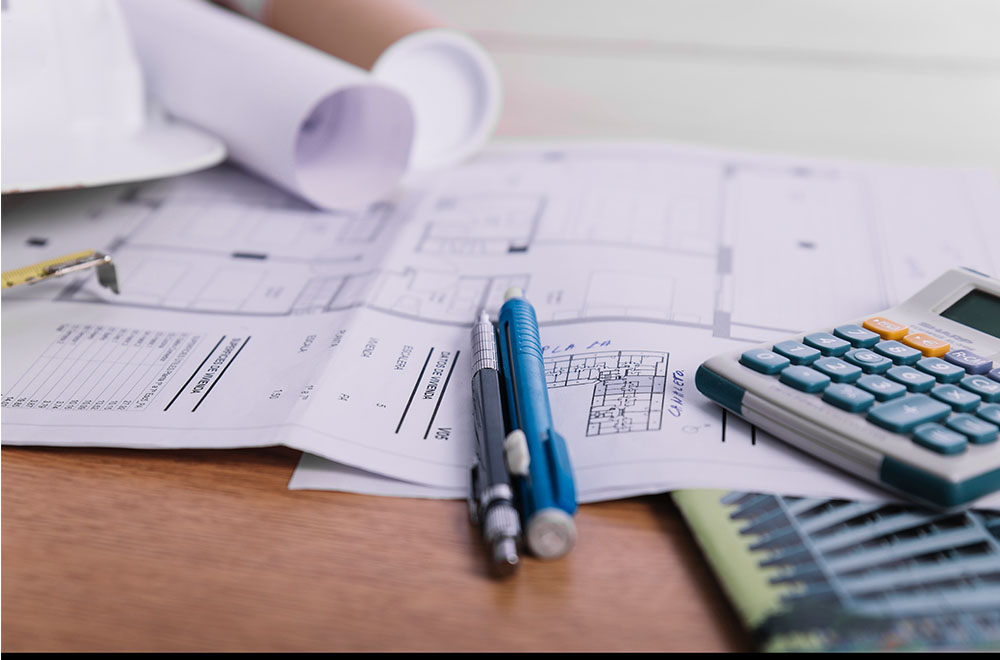Imagine building a house without knowing how much wood or concrete you need. It sounds chaotic, right? That’s why construction takeoffs are crucial. They help you determine the exact materials required and their costs. Whether planning a small renovation or constructing a skyscraper, accurate takeoffs are the foundation of successful project planning and budgeting.
You’ll learn how to perform construction takeoffs from start to finish. By the end of this guide, you’ll be equipped to handle construction takeoffs effectively and confidently.
Table of Contents
ToggleWhat is a Construction Takeoff?
A construction takeoff is listing all the materials needed for a building project. Think of it as creating a detailed shopping list for construction. You identify every item required, from bricks and beams to nails and concrete. Estimators use project maps and plans to make sure they account for everything.
It determines the exact quantity of materials required to complete a project. This process ensures you know how many nails, concrete, or tiles are needed, making it a vital part of any construction job.
Why are they crucial?
Exact takeoffs are essential because they ensure you have enough materials and stay within budget.
In construction, not having an accurate takeoff can cause significant problems. Running out of materials can halt a project, causing delays and higher expenses. Ordering too much wastes money and requires unnecessary storage.
They help predict the project’s total cost, including unexpected expenses, ensuring the project is planned well and completed on time.
Types of Takeoffs – Quantity vs. Material Takeoffs
There are two main types of construction takeoffs: quantity and material. Each plays a different role in project planning.
These focus on counting the items or units needed. For example, you must know how many windows, doors, or tiles are required. It’s about counting individual pieces used in the construction.
Material Takeoffs
These include detailed information about the materials’ dimensions and types. Instead of just listing “wood,” a material takeoff specifies how many planks of 2×4 inch wood or 4×4 inch wood are needed. This detailed analysis helps you order the correct materials.
How to Do a Construction Takeoff
1. Review Project Plans
To start a construction project, you must thoroughly review the project plans. These blueprints and documents are like detailed maps that show you everything you need to know about the build.
As you gather all the layout, architectural drawings, and specifications, remember that these documents hold the key to the project’s scope. Your study of the floor and site plans will disclose the layout, identifying the areas, rooms, and sections that will require materials.
Pay attention to notes and symbols on the drawings. These details include material types and special instructions. Use a highlighter to mark crucial sections or details that you’ll need frequently.
In a sample floor plan, each room is labeled with measurements. Symbols indicate doors, windows, and electrical outlets.
2. Count and List Materials
Next, you need to count and list all the materials required for the project. This step ensures you know what to order.
Identify symbols on the drawings representing different materials. For example, a square might signify a window. Create a detailed list of all needed materials, such as lumber, drywall, and windows.
Measure items like pipes by their length. Calculate the surface area for materials like flooring. Determine the volume for materials like concrete.
Digital tools automate this process in digital takeoffs. They can automatically count and list materials from digital map, saving time and reducing errors. It depends on the takeoff method you are using.
3. Measure and Scale Components
Erroless measurement is essential to determine how much material you need for the project.
For manual takeoff, you can use a tape measure or scale ruler to estimate dimensions from a physical diagram. This requires careful attention to detail. In digital takeoff, you can use software tools to calculate distances on digital plans.
4. Determine Material Quantities
Convert your calculations into material quantities to know precisely how much you’ll need.
Verify that your estimates match the units used for buying materials, like square feet for flooring.
For instance, if you measure 500 square feet for flooring, you’ll need enough tiles or planks to cover that area.
Tools like PlanSwift automate these calculations. You input measurements, and the software converts them into the required material quantities, saving time and lessening errors.
5. Estimate Material Costs
Finally, estimate the costs of the materials you’ll use by checking current prices and considering potential changes.
Look up market prices for each material on sites like Home Depot or Lowe’s. For larger quantities, contact suppliers for quotes, which can sometimes offer better pricing than retail. Consider if material prices might change.
For example, lumber prices can vary, so adding a contingency to your budget is wise.
Advanced Techniques for Specialized Takeoffs – MEP Takeoffs
In construction takeoffs, it’s essential to consider more than just walls and floors. You must also consider the Mechanical, Electrical, and Plumbing (MEP) takeoffs. These systems are like the building’s veins and nerves, ensuring it has power, heating, cooling, and water.
Let’s explore how to handle these specialized takeoffs effectively.
Mechanical Takeoffs
Mechanical systems, including heating, ventilation, and air conditioning (HVAC), require careful planning.
How to do?
List all HVAC equipment, like air handlers, furnaces, and chillers. Measure the length and size of ducts needed to distribute air. Include all necessary fittings, such as elbows and joints, and insulation materials for the ductwork.
For example, planning a heating system for a school involves knowing how many heaters are needed, their sizes, and the duct lengths to ensure even heat distribution.
Electrical Takeoffs
Electrical systems involve wiring, lighting, and power distribution.
Measure the lengths of wires and cables needed to connect devices. Count light fixtures, outlets, switches, and distribution panels. Plan the pathways that will house and protect the wiring.
Plumbing Takeoffs
Plumbing systems cover water supply and waste removal. Focus on:
Determine the lengths of pipes for water supply and drainage, including all necessary fittings.
Quantify sinks, toilets, and other plumbing fixtures. List components like valves for controlling water flow and pumps for moving water or waste.
Common Errors in Construction Takeoffs And Solutions
Construction takeoffs are detailed and complex, and it’s easy to make mistakes. Here are some common errors and how to avoid them:
- Misreading Design: Misinterpreting the plans can lead to significant errors in counting and measuring materials. Study the outlines thoroughly. Use guides or training resources to learn plan symbols and scales.
- Inaccurate Measurements: Using the wrong scale or incorrectly measuring can disrupt the entire takeoff process. Always double-check your measurements. Use precise tools like a scale ruler for manual measurements or reliable digital tools.
- Underestimating Material Quantities: Calculating too few materials can cause project delays and increased costs. Add a buffer to your material estimates, typically around 10%, to account for waste and unexpected needs.
- Ignoring Plan Revisions: Failing to update takeoffs when project plans change. Stay in constant communication with the project team. Regularly review and adjust your takeoffs to reflect any changes.
- Missing Plan Details: Important details or pages are missing from the project plans. Contact the project manager or architect to get the missing information. Review the entire set of documents at the start to ensure you have everything.
- Unclear Specifications: Do not understand specific requirements or materials in the plans. Ask the designer or engineer for clarification. Feel free to seek additional details to ensure accuracy.
- Software Issues: Digital tools malfunctioning or providing incorrect results. Check for software updates and ensure proper configuration. Use help resources or customer support for troubleshooting.
Conclusion
Now that you have a solid understanding of construction takeoffs, it’s time to apply these techniques to your next project. Start by gathering your project plans and reviewing them carefully. Choose the manual or digital method that best suits your project’s needs and complexity.






